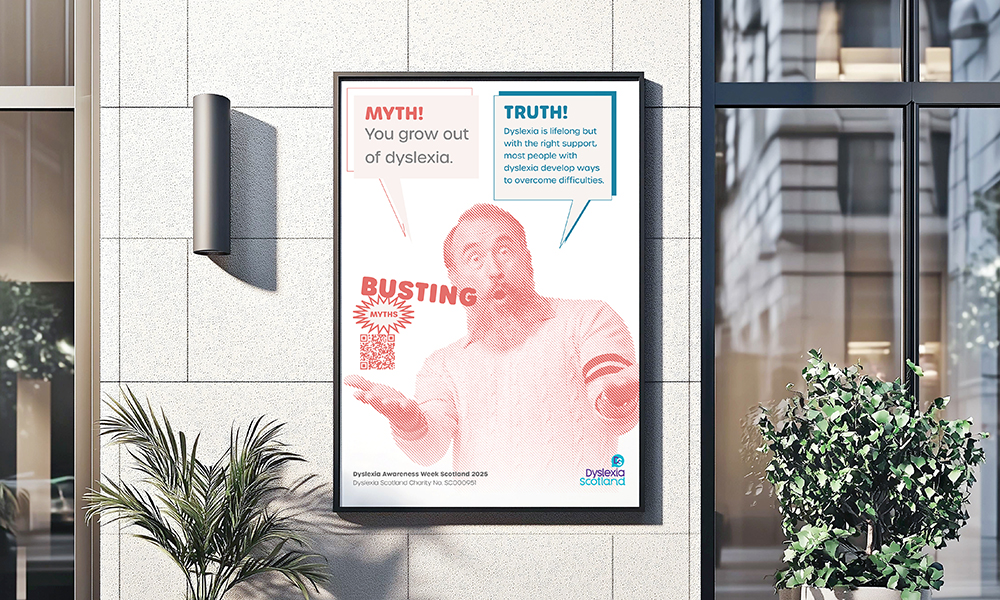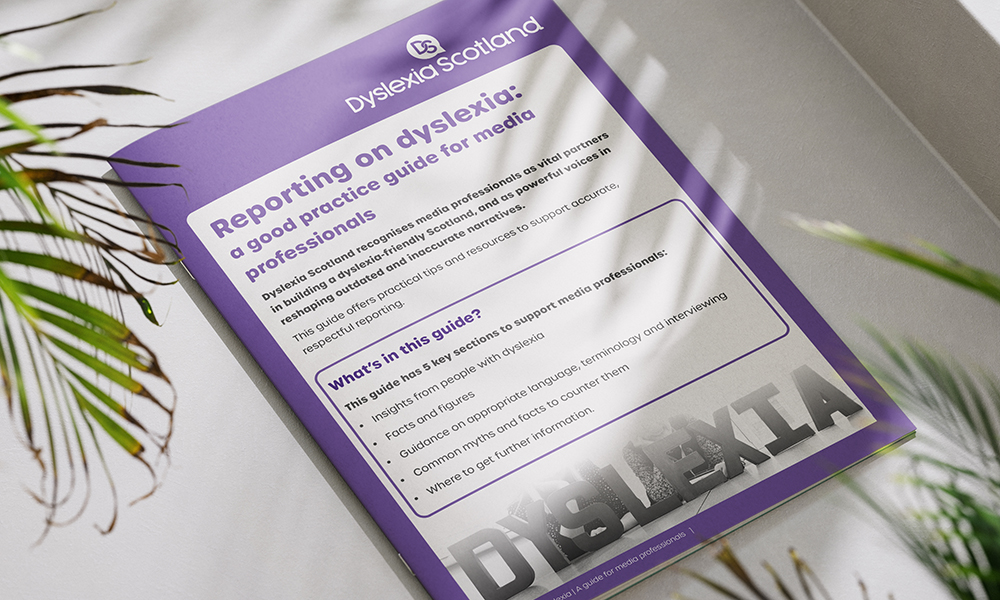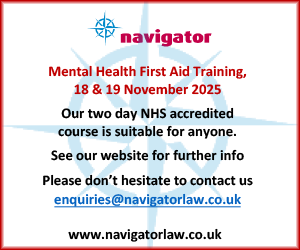Katie Carmichael on why Dyslexia Awareness Week Scotland 2025 (29 September to 5 October) matters more than ever
When we began planning our Dyslexia Awareness Week Scotland 2025 campaign, we didn’t realise just how timely a theme like Busting Myths would be.
This week, false claims about autism from the Trump administration in the USA have been widely reported.
The controversy is a reminder of how essential critical literacy skills, fact-checking and reliable evidence are when it comes to understanding neurodivergence. It also highlights why we need clear, effective communication to counter misinformation.
A key indicator of success for our strategy for a dyslexia-friendly Scotland is when everyone knows what dyslexia is – and isn’t. And we’ve got some work to do there.
What the public believes
Earlier this year, we worked with ScotPulse to survey people across Scotland about their understanding of dyslexia. The results showed just how persistent some myths still are:
- Myth 1: Dyslexia is caused by visual difficulties.
35% of respondents believed coloured overlays or tinted lenses can “fix” dyslexia. In reality, overlays can help with visual stress, which is different from, but can co-occur with, dyslexia. To help people get the facts straight, we’re encouraging use of the Scottish working definition of dyslexia, which was recently reviewed alongside a new international definition developed by experts. - Myth 2: Fonts are the answer
Nearly eight in ten people (78%) thought particular typefaces make reading easier. Research shows that what matters far more is spacing between letters and lines, not the typeface itself. This prompted us to collaborate with the University of Glasgow to review nearly 20 academic studies on dyslexia and print reading. We’ve translated the findings into practical recommendations for document makers and designers.
The survey also gave us a useful baseline on our own reach: 43% of respondents had heard of Dyslexia Scotland. This is encouraging, but it also shows we have more work to do. That’s why this year’s campaign doesn’t just tackle myths - it also aims to raise awareness of our charity, so people know where to turn for reliable information.
Amplifying our messages
If we want to be seen, heard and understood, we have to be creative. We campaign designers often talk about the Rule of 7: that people need to engage with a message several times and in several ways before it sinks in. So, we’ve developed a multi-sensory campaign that makes engaging with the facts easy and enjoyable.
From podcasts to posters, articles to animations, and events to educational resources, we’ve created a suite of touchpoints designed to be seen, heard, felt and experienced.

Supporting the media
We’re also backing up our campaign with a new resource for journalists and media professionals. Our 2024 baseline study, launched in the Scottish Parliament, revealed that 71% of adults with dyslexia in Scotland feel the media misrepresents their experiences. In response, we’ve developed new guidance for the media on how to report accurately and responsibly on dyslexia and we’ve published it in time for this year’s coverage.

How you can get involved
We’ll be gauging how well we’re moving the knowledge needle through responses to our campaign quiz. Why not take it yourself and see how well you know the facts?
All our campaign materials are free to access, and many are downloadable and printable. You can help by:
- Sharing a post
- Hanging a poster
- Taking (and sharing) our quiz
Dyslexia Awareness Week Scotland has always been about raising awareness and understanding. But this year, there’s something even bigger at stake: resisting the spread of misinformation.
Katie Carmichael is Dyslexia Scotland’s Lead for Creative and Digital







